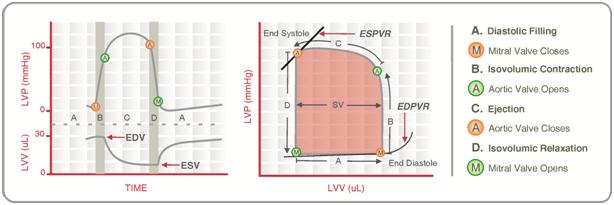This module is of interest to those who want to master the pressure-volume hemodynamic experimental techniques on small rodents using the power of Transonic conductance and admittance technologies. Scientists have historically relied on systemic blood pressure, blood flow, and ventricular pressure to report changes in heart performance. These are all important parameters but only form part of the picture of heart performance. Pressure-volume (PV) loops provide a range of hemodynamic parameters which are not readily measurable by other methods. This includes changes in contractility, elastance, power, energetics, and efficiency.
What is even more powerful about PV loops is that they provide quantitative measurements of parameters, not just qualitative results. This makes PV loops the single most comprehensive measurement of hemodynamics and cardiac function available.
This is a 3-days course, but an optional extra day is being offered to provide attendees with an opportunity to learn how to introduce a myocardial infarction through ligation of the left anterior descending coronary artery (LAD) or to induce left ventricle hypertrophy by transverse aortic constriction (TAC).

If appropriate for you this can include;
- Catheterization of the right carotid artery for left ventricular performance
- Catheterization of the right jugular vein for right ventricular performance
- Cardio-vascular models (MI and TAC) or any others specifically relevant to your needs
- Other techniques of particular interest to participants by agreement before or during the module
Unfortunately, Transonic stopped the production of PV-loop equipment. Millar is taking over the production of the catheters. Contact ADinstruments for further details
